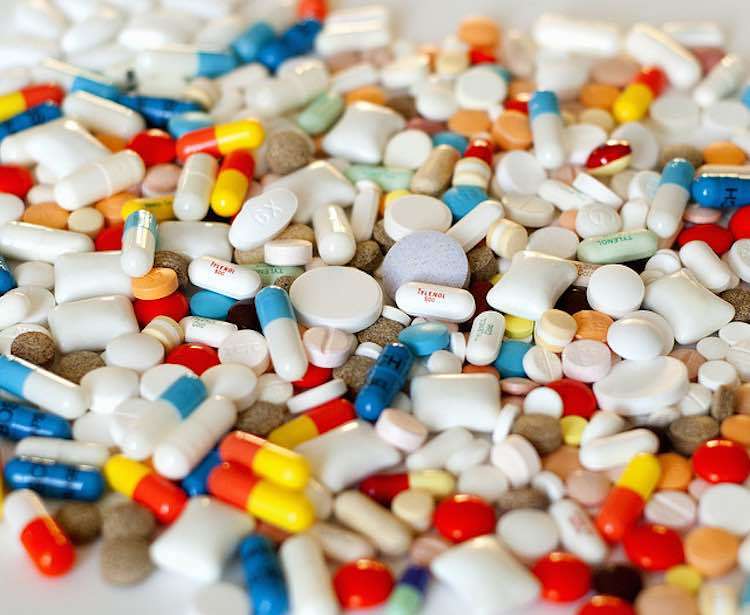'Friendship Benches' Alleviate Mental Illness Symptoms For Thousands
These community "grandmas" are creating groundbreaking success in treating mental health symptoms in their own neighborhoods.

American Teenagers' use of drugs, alcohol and tobacco declined significantly in 2016, to rates that are the lowest since the 1990s, a new national study showed.
The results derive from the annual Monitoring the Future study, now in its 42nd year. About 45,000 students in some 380 public and private secondary schools have been surveyed each year in this national study, designed and conducted by research scientists at U-M's Institute for Social Research and funded by the National Institute on Drug Abuse. Students in grades 8, 10, and 12 are surveyed.
Considerably fewer teens reported using any illicit drug other than marijuana in the prior 12 months — 5%, 10%, and 14% in grades 8, 10 and 12, respectively — than at any time since 1991. These rates reflect a decline of about one percentage point in each grade in 2016, but a much larger decline over the longer term.
In fact, the overall percentage of teens using any of the illicit drugs other than marijuana has been in a gradual, long-term decline since the last half of the 1990s, when their peak rates reached 13%, 18% and 21%, respectively.
Marijuana, the most widely used of the illicit drugs, dropped sharply in 2016 in use among 8th-graders to 9.4%, or about one in every 11 indicating any use in the prior 12 months. Use also declined among 10th-graders as well, though not by a statistically significant amount, to 24% or about one in every four 10th-graders.
Daily or near-daily use of marijuana — defined as use on 20 or more occasions in the previous 30 days — also declined this year among the younger teens (significantly so in 8th grade to 0.7% and to 2.5% among 10th-graders).
Prescription amphetamines and other stimulants used without medical direction have constituted the second-most widely used class of illicit drugs used by teens. Their use has fallen considerably, however. In 2016, 3.5%, 6.1% and 6.7% of 8th-, 10th- and 12th-graders, respectively, say they have used any in the prior 12 months — down from recent peak levels of 9%, 12% and 11%, respectively, reached during the last half of the 1990s.
Prescription narcotic drugs have presented a serious problem for the country in recent years, with increasing numbers of overdose deaths and emergencies resulting from their use. Fortunately, the use of these drugs outside of medical supervision has been in decline, at least among high school seniors — the only ones for whom narcotics use is reported. In 2004, a high proportion of 12th-graders — 9.5%, or nearly one in 10 — indicated using a prescription narcotic in the prior 12 months, but today that percentage is down by half to 4.8%.
"That's still a lot of young people using these dangerous drugs without medical supervision, but the trending is in the right direction," said Lloyd Johnston, the study's principal investigator. "Fewer are risking overdosing as teenagers, and hopefully more will remain abstainers as they pass into their twenties, thereby reducing the number who become casualties in those high-risk years."
A number of other illicit drugs have shown declining use, as well. Among them are cocaine, crack, sedatives and inhalants (the declining prevalence rates for these drugs may be seen in the tables and figures associated with this release.)
The use of alcohol by adolescents is even more prevalent than the use of marijuana, but it, too, is trending downward in 2016, continuing a longer-term decline. For all three grades, both annual and monthly prevalence of alcohol use are at historic lows over the life of the study. Both measures continued to decline in all three grades in 2016.
Binge drinking has fallen by half or more at each grade level since peak rates were reached at the end of the 1990s. Today, the proportions who binge drink are 3%, 10% and 16% in grades 8, 10 and 12, respectively.
"Since 2005, 12th-graders have also been asked about what we call ‘extreme binge drinking,' defined as having 10 or more drinks in a row or even 15 or more, on at least one occasion in the prior two weeks," Johnston said. "Fortunately, the prevalence of this particularly dangerous behavior has been declining as well."
Declines in cigarette smoking and certain other forms of tobacco use also occurred among teens in 2016, continuing an important and now long-term trend in the use of cigarettes.
(Source: University of Michigan)
Multiply The Good: Click To Share The News – Photo by Gatis Gribusts, CC
Be the first to comment